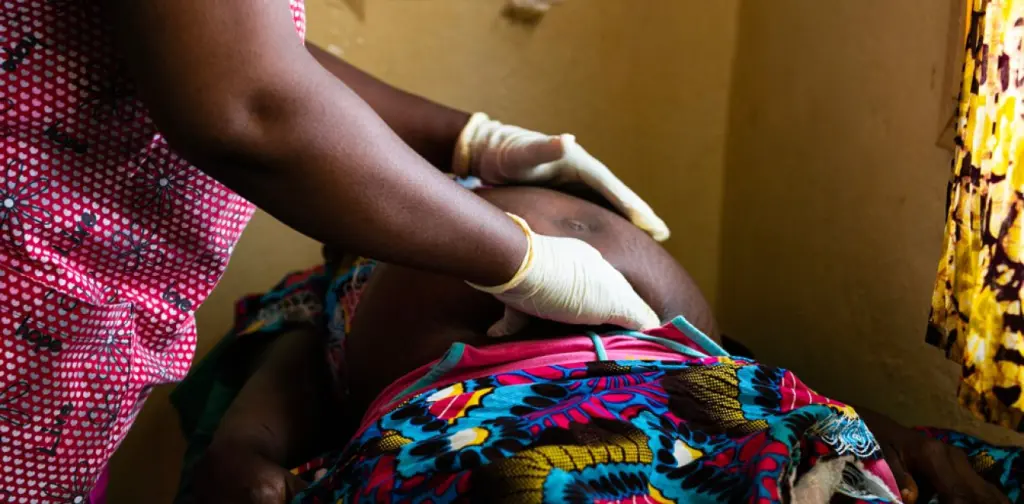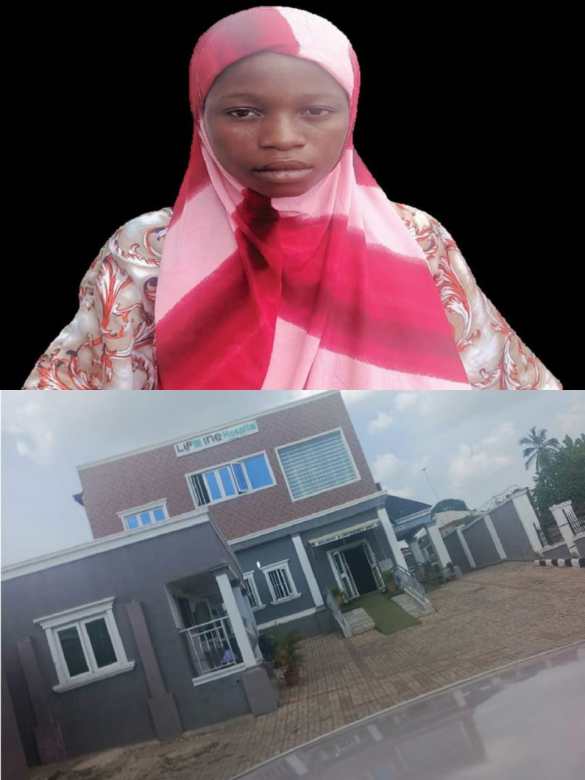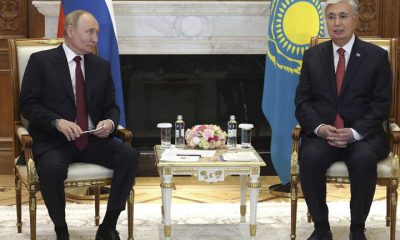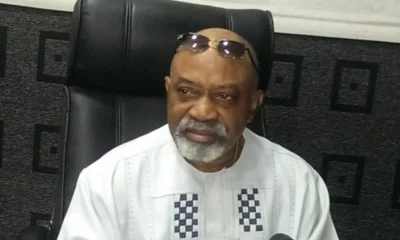Health
Maternal deaths in northern Nigeria remain critically high – WHO

The World Health Organization (WHO) has raised concerns over the high rate of maternal deaths in Africa, with Nigeria among the most affected countries.
According to a newly released study, complications such as hemorrhage, severe bleeding, and hypertensive disorders, including preeclampsia, remain the leading causes of maternal deaths across the continent.
The report, published in The Lancet Global Health, revealed that in 2020 alone, an estimated 287,000 women worldwide died from pregnancy-related complications, with sub-Saharan Africa accounting for a significant portion of these deaths.
Nigeria, which has one of the highest maternal mortality rates globally, continues to face challenges in providing adequate healthcare for pregnant women, particularly in rural and underserved communities.
The WHO study found that excessive bleeding during or after childbirth was responsible for nearly one-third of maternal deaths, while hypertensive disorders, such as preeclampsia, accounted for an additional 16%. Other critical factors contributing to maternal deaths included infections, unsafe abortions, childbirth-related injuries, and a lack of access to emergency obstetric care.
Dr. Pascale Allotey, WHO’s Director of Sexual and Reproductive Health and Research, stressed that most of these deaths could be prevented with timely medical intervention and improved maternal healthcare services.
She highlighted the urgent need for African governments, including Nigeria, to strengthen key aspects of maternity care, such as antenatal services, skilled birth attendance, and emergency obstetric care.
In Nigeria, poor healthcare infrastructure, inadequate medical personnel, and financial constraints continue to limit access to essential maternal health services. Many women, particularly in rural areas, give birth at home without the assistance of trained healthcare providers, increasing the risk of complications and death. Additionally, a lack of awareness about preeclampsia and other pregnancy-related conditions often leads to delayed medical intervention.
Northern Nigeria continues to face one of the highest maternal mortality rates in the world, with thousands of women dying each year due to pregnancy-related complications.
The region, which accounts for a significant portion of Nigeria’s population, struggles with inadequate healthcare facilities, cultural barriers, poverty, and insecurity, all contributing to the high number of maternal deaths.
According to reports from the World Health Organization (WHO) and the Nigeria Demographic and Health Survey (NDHS), Nigeria accounts for nearly 20 percent of global maternal deaths, with northern states experiencing the highest burden.
In states such as Kano, Sokoto, Zamfara, Jigawa, and Yobe, maternal mortality rates exceed 1,000 deaths per 100,000 live births, far above the national average of 512 deaths per 100,000 live births. Rural areas remain the most affected, with maternal deaths recorded at rates three to five times higher than in urban centers.
The leading causes of maternal deaths in the region include severe bleeding during childbirth, hypertensive disorders such as preeclampsia, infections, unsafe abortions, and complications from prolonged labor. Many of these deaths occur due to poor access to quality healthcare, as rural communities often lack functional health facilities, skilled birth attendants, and emergency obstetric services. Often, women must travel long distances to reach hospitals, a delay that often proves fatal.
WHO’s findings emphasized the importance of postnatal care, noting that most maternal deaths occur during or shortly after childbirth. Yet, in many African countries, including Nigeria, a significant percentage of women do not receive follow-up care within the first few days after delivery. This gap in healthcare services increases the risk of complications that could otherwise be managed with timely intervention.
Dr. Jenny Cresswell, a WHO scientist and co-author of the study, pointed out that multiple interrelated factors contribute to maternal mortality in Africa. For instance, conditions like preeclampsia can increase the likelihood of severe bleeding and other life-threatening complications long after childbirth. She called for a holistic approach to maternal health, emphasizing that access to quality healthcare before, during, and after pregnancy is essential to saving lives.
In 2024, WHO and its partners launched a global roadmap to combat postpartum hemorrhage, one of the leading causes of maternal death. The initiative aims to improve access to lifesaving medical treatments, particularly in low-resource settings like Nigeria. Furthermore, the 194 member states of the World Health Assembly recently passed a resolution committing to strengthening maternal and newborn healthcare services.
As part of its ongoing efforts, WHO has announced that World Health Day 2025 will focus on maternal and newborn health, calling for a significant scale-up of healthcare services in the poorest and most crisis-affected regions. The campaign will not only emphasize reducing maternal deaths but also advocate for improved postnatal care, mental health support, and access to quality reproductive health services for African women.
Health
BREAKING: Senate President Akpabio Currently Hospitalised In London After Collapse, Misses Key Budget Session – Sources

According to the sources, Akpabio “collapsed on the 10th of this month and was rushed to London in a private jet provided by billionaire businessman, Aliko Dangote.”
The Senate President, Godswill Akpabio, is currently ill and receiving medical treatment at a hospital in London, the United Kingdom, after reportedly collapsing earlier this month, top sources from the National Assembly have told Ekwutosblog.
According to the sources, Akpabio “collapsed on the 10th of this month and was rushed to London in a private jet provided by billionaire businessman, Aliko Dangote.”
The sources added that this development has kept the Senate President away from official duties, including the Medium Term Expenditure Framework (MTEF) and Fiscal Strategy Paper (FSP) interactive session held on Wednesday.
SaharaReporters was informed that Akpabio’s condition is serious enough to warrant continued overseas medical care.
A source disclosed that “this is the second time he is being rushed to London for treatment,” raising fresh concerns about his health and capacity to continue leading the upper legislative chamber.
Multiple senators are said to have travelled to London to check on him. One of the sources said, “A number of senators have gone to visit me,” in reference to Akpabio’s hospitalisation abroad.
The sources further revealed that medical experts attending to the Senate President have reportedly advised him to reduce his workload.
According to one of the briefings received by SaharaReporters, “Doctors are advising him to step down from the Senate to attend to his health.”
Akpabio’s absence was felt at the flag-off of the MTEF and FSP interactive session, a crucial engagement between the executive and the legislature that outlines Nigeria’s medium-term fiscal and economic plans.
SaharaReporters gathered that he “has already missed today’s Medium Term Expenditure Framework presentation today.”
In his stead, the Senate President was represented by Senator Onyekachi Nwaebonyi at the event, confirming Akpabio’s inability to attend the session in person.
Further indications of Akpabio’s condition emerged from aides monitoring developments around his return.
One source was quoted as saying, “One of the aides just told me now that they are going to pick the guy from the airport,” suggesting ongoing logistical arrangements around his movement.
Akpabio’s last public appearance appeared to be on December 9 when the Nigerian Senate formally approved President Bola Tinubu’s request to send Nigerian troops to the Republic of Benin to support efforts to restore peace and stability following an attempted coup.
Senate President, Godswill Akpabio, had announced the approval during the plenary, after lawmakers deliberated the request in the Committee of the Whole under section 5, Part II of the Constitution.
The Senators voted unanimously in favour, granting legislative backing for the regional security intervention.
Akpabio had described the decision as a critical move, emphasising that unrest in a neighbouring country poses risks to the entire West African region.
“An injury to one is an injury to all,” Akpabio had said, stressing Nigeria’s duty to support its ECOWAS partners in maintaining regional stability.
Health
Robotic surgeries now happening in many private hospitals in Nigeria- Muhammad Ali Pate, Minister Of Health & Social Welfare

Nigeria’s healthcare sector just got a major boost! Minister of Health and Social Welfare, Muhammad Ali Pate, has announced that robotic surgeries are now being performed in several private hospitals across the country.
This marks a significant milestone in Nigeria’s medical landscape, positioning the country as a hub for advanced surgical care in West Africa.
The Toumai Pro Robotic Surgery Platform, recently launched at Nisa Premier Hospital in Abuja, is a game-changer. This state-of-the-art technology enables surgeons to perform complex procedures with enhanced precision, reducing recovery time and complications.
Some benefits of robotic surgery include:
Minimally invasive: Smaller incisions, less pain, and faster recovery
Increased precision: Enhanced dexterity and accuracy
Reduced complications: Lower risk of infection and bleeding
Hospitals like Nisa Premier Hospital, Kelina Hospital, and Lagoon Hospital are already offering robotic surgery services. This development is expected to attract medical tourism, boost Nigeria’s healthcare sector, and improve patient outcomes.
As Minister Pate puts it, “This is not just a milestone for Nigeria, but for the entire African continent”.
https://www.instagram.com/reel/DSRb0Q3DH71/?igsh=MXBscG4yY2dhOXBqZA==
Health
Osun Hospital Allegedly Detains Newborn Over Mother’s N700,000 Medical Debt

A private hospital in Osun State has come under public attention following reports that it is detaining a newborn baby over an unpaid medical bill estimated at N700,000. The incident has generated public concern and renewed discussions about patients’ rights and medical ethics in Nigeria.
The case involves a young mother who reportedly experienced serious medical complications during childbirth, leading to extended hospital care for both her and the baby. After treatment was completed and the newborn was declared medically stable, the hospital allegedly refused to discharge the child, insisting that the outstanding bill must be settled first.
Sources say the family has already paid a significant amount for medical services but has been unable to raise the remaining balance due to financial hardship.
Relatives of the mother have appealed for understanding, stating that the continued stay of the newborn in the hospital has placed emotional and psychological strain on the family.
The hospital management is reported to have justified its position by pointing to past experiences where patients left without paying their medical bills. According to the management, unpaid debts affect the hospital’s ability to operate and provide services to other patients.
The situation has attracted criticism from members of the public and human rights advocates, who argue that holding patients, particularly newborns, over unpaid bills is unethical and contrary to basic human rights principles. Some legal observers have also suggested that such actions may conflict with existing laws and professional medical standards.
As public reaction continues to grow, there have been calls for the Osun State Government and relevant health authorities to step in, facilitate the release of the newborn, and address systemic issues that allow such incidents to occur.
The case has once again drawn attention to the broader challenges facing Nigeria’s healthcare system, especially the financial burden on families and limited access to affordable healthcare.
-
Business1 year ago
US court acquits Air Peace boss, slams Mayfield $4000 fine
-

 Trending1 year ago
Trending1 year agoNYA demands release of ‘abducted’ Imo chairman, preaches good governance
-

 Politics1 year ago
Politics1 year agoMexico’s new president causes concern just weeks before the US elections
-

 Politics1 year ago
Politics1 year agoPutin invites 20 world leaders
-

 Politics1 year ago
Politics1 year agoRussia bans imports of agro-products from Kazakhstan after refusal to join BRICS
-
Entertainment1 year ago
Bobrisky falls ill in police custody, rushed to hospital
-
Entertainment1 year ago
Bobrisky transferred from Immigration to FCID, spends night behind bars
-
Education1 year ago
GOVERNOR FUBARA APPOINTS COUNCIL MEMBERS FOR KEN SARO-WIWA POLYTECHNIC BORI













